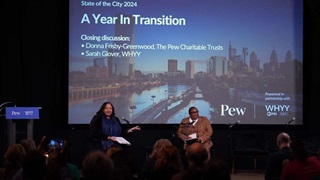Flood Mitigation Can Prepare Communities, Limit Risk, and Reduce Disaster Costs
Resources to help federal, state, and local governments act before waters rise

When communities prioritize mitigation before a flood, they help keep their residents safe, decrease recovery costs, and minimize the harm to local economies and the environment. Since 2000, flood-related disasters in the U.S. have cost more than $850 billion, and experts predict that these events will increase in frequency and intensity.
Research shows that every $1 invested in mitigation saves an average of $6 in recovery costs, but mitigation efforts, such as removing properties from flood-prone areas, increasing green space, and restoring and protecting flood plains, remain insufficient nationwide. All levels of government must invest in policies and programs that encourage communities to minimize the cost and devastation of floods.
For more information on Pew’s work to support pre-disaster mitigation and how communities across the country are implementing policies and plans, see the resources below.


Property Buyouts Can Reduce Flood Impacts
OUR WORK
Spotlight on Mental Health


Mitigation Matters: Policy Solutions to Reduce Local Flood Risk
MORE FROM PEW
Explore Pew’s new and improved
Fiscal 50 interactive
Your state's stats are more accessible than ever with our new and improved Fiscal 50 interactive:
- Maps, trends, and customizable charts
- 50-state rankings
- Analysis of what it all means
- Shareable graphics and downloadable data
- Proven fiscal policy strategies
Welcome to the new Fiscal 50
Key changes include:
- State pages that help you keep track of trends in your home state and provide national and regional context.
- Interactive indicator pages with highly customizable and shareable data visualizations.
- A Budget Threads feature that offers Pew’s read on the latest state fiscal news.








